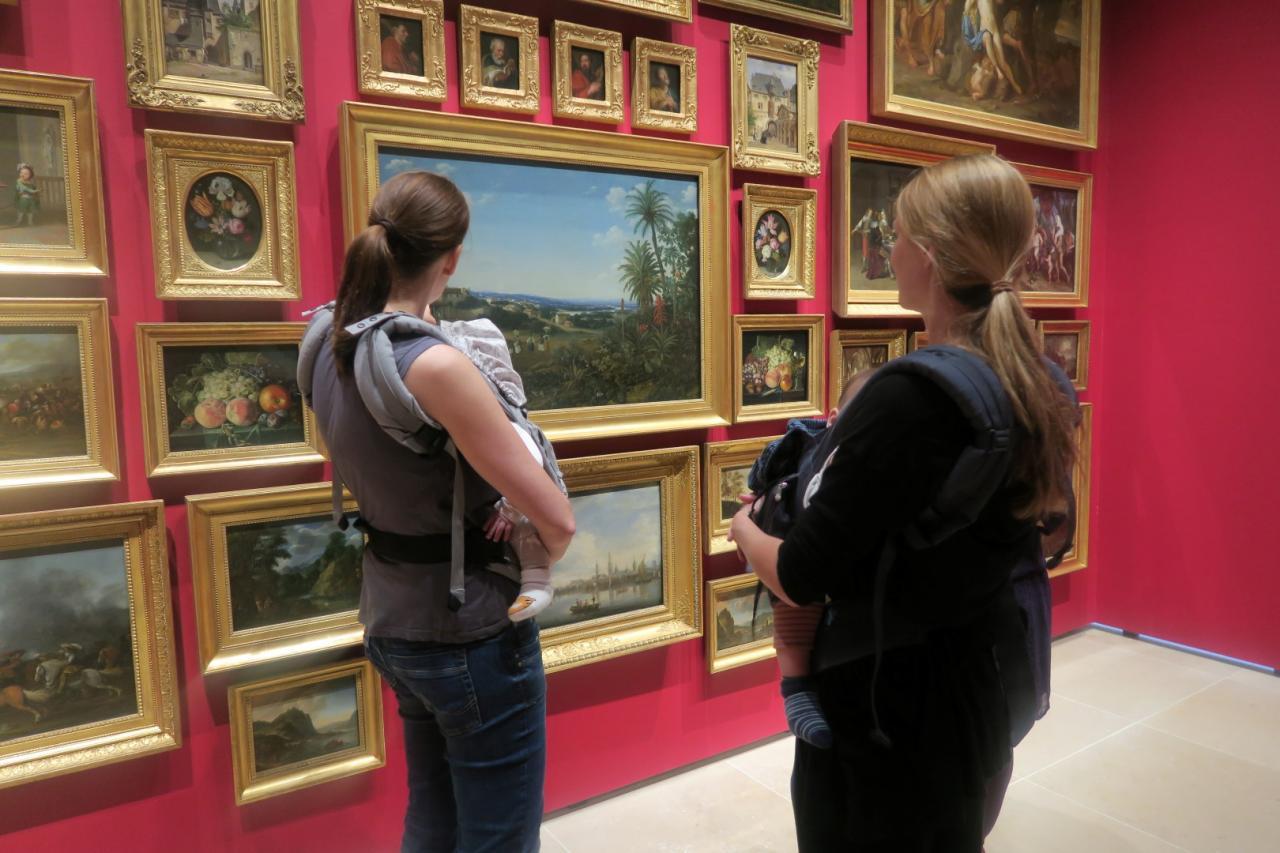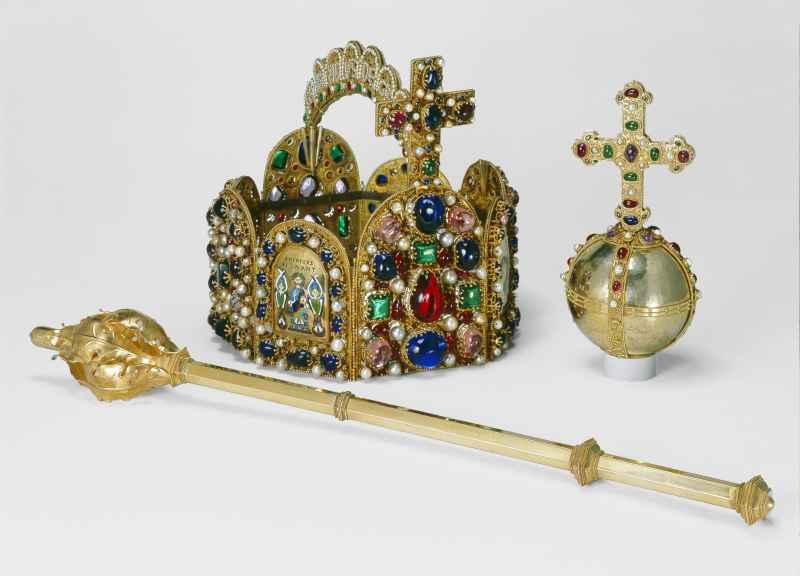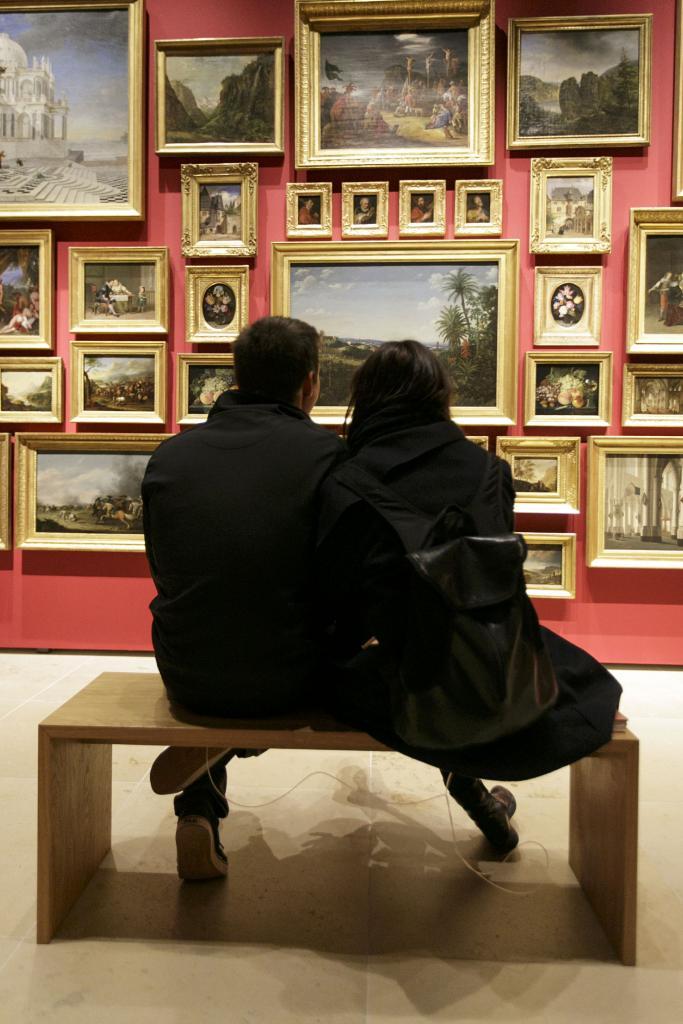
Highlights in the museum
This selection takes you to some of our highlights – to famous, magnificent and unusual exhibition pieces, as well as architectural peculiarities. Thus you are able to gain some insight into the museum and its history dating back over 800 years: From the famous city models and the Staufer period, to the impressive historical wooden staircase from 1842, and finally to special pieces from collectors and donors of the museum.
Imposing model of the Old Town
The well-known model of the Old Town was built for the museum from 1925 to 1961 by brothers Hermann and Robert Treuner. It shows what the historical buildings and streets looked like in 1927 and thus documents the Old Town, which was almost completely destroyed by the bombing of Frankfurt during the Second World War. The unsustainable social and hygienic conditions at the time are nowhere to be seen in the model’s cleanly painted alleys and facades. In this sense, the model was always a construct: It created a reduced, harmonious, romantic and homogenous image of the Frankfurt Old Town in a way that it likely never existed.
The imperial insignia
The secular symbols (insignia) of the German kings and “Roman” emperors were kept in various locations in the empire until the 15th century. Alongside Aachen and Nuremberg, Frankfurt acted as a capital city of the Holy Roman Empire from the 12th century onwards: 31 kings and emperors were elected here and 10 were also crowned. The copies made in 1913 were part of a larger “programme of remembrance” of Frankfurt's tradition as a place of election and coronation.
Staufer silver bowl
The silver bowl from the 12th/13th century is an extremely valuable and rare find. There are only a few silver objects from this era that have been preserved. The quality and place where the bowl was found suggest that it was used for a king. It remains the only surviving piece of the courtly lifestyle in the Staufer period in Frankfurt. It was most likely used to serve salt – back then a luxury product. The bowl was found in the 1980s during excavations for the underground car park on the Frankfurt Römerberg and was almost certainly part of a larger silver ensemble.
Historic spiral staircase
Around 1280, the Saalhof lost its function as imperial residence. The building was renovated and expanded many times. The wealthy wool and cloth traders Heinrich and Johann Bernus had the Saalhof expanded into a representative Baroque city palace in 1715/17. In 1841, the building was expanded once again by Frankfurt architect Heinrich Burnitz. The original spiral staircase survived the bombings of the Second World War unscathed.
Saalhof chapel
An important exhibition object on the Staufer period is the Staufer building itself. The semi-circular Saalhof chapel was built shortly after 1200 at the east wall of the residential and fortified tower built just a few years beforehand. The clear construction joints with which it is attached to the tower show that it was built at a later date. Access was possible through the preserved corridor from the hall in the palace building. Today, the “Morgenstern‘sche Miniaturkabinett” is housed in the chapel. The three painters and restorers worked for nearly every Frankfurt collector of their day.
Schöner globe
Annenaltar
A beloved object
Frankfurt copies China!
The tower clock in the Rententurm
The four-storey Rententurm (Toll Tower) was built in the middle of the 15th century together with the city gate (Fahrtor). The port, where all commercial goods arrived via the Main, lay before it. Taxes for incoming and outgoing goods were collected in the “Rentamt”, the toll office in the first floor of the tower; the tower was closed to the public for over 500 years. In the course of the renovation of the museum’s old buildings, the clock was also restored, and with it the two large black dials that had been part of Rententurm’s characteristic appearance since the 19th century. The historical tower clockwork is a pendulum system clock from 1937.
Weaponry for Frankfurt
Entwined in flowers: The oldest preserved painting of a cityscape
One of the oldest painted views of Frankfurt originates from painter Jakob Marrel (1613-1681), the step-father of Maria Sibylla Merian, born in 1647. Marrel created the painting in 1651 when he finally settled down in Frankfurt. It combines a floral still life with butterflies and other insects with a view of Frankfurt from the West. Both of Marrel’s grandfathers were jewellers from Wallonia. At the end of the 16th century, up to 8,000 Flemish religious refugees had found refuge in Frankfurt. They helped the impoverished city blossom economically and culturally.


